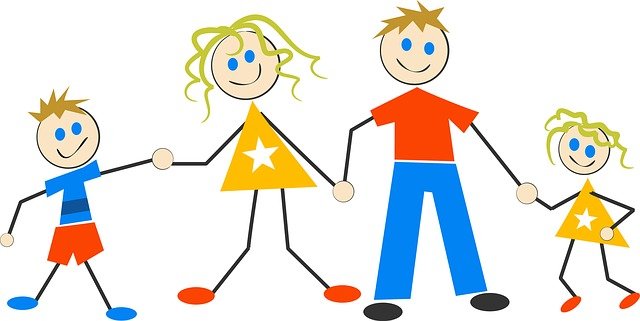Benefits of Mindfulness Activities For Children
Scholarly research finds that mindfulness activities for children decrease stress and anxiety, increase attention, improve interpersonal relationships, strengthen compassion, and offer many other benefits.
As a result, mindfulness can provide better focus, and stress relief, with fun at the helm. Providing calm fun encourages focus that children enjoy, and parents and teachers can have fun too.
Children Also Suffer Anxiety and Stress
Even children suffer from distraction, anxiety, and stress. However, they cannot express what they feel as adults do. As a result, children act out in ways that hinder their attention, sleep patterns, eating habits, social behaviors, and health in general. Mindfulness reduces feelings of stress and improves anxiety and distress when placed in a stressful social situation.
Therefore, mindful meditation helps children to regulate their emotions. They are gaining control over how they process emotional upheavals. Mindfulness is associated with emotion regulation across many studies. Mindfulness creates changes in the brain that correspond to less reactivity and better ability to engage in tasks even when emotions are activated
Australian Mindfulness Research Study Helps Children Build Stress Resilience.
Australia has new research that shows mindfulness-based lessons with younger children aid in executive function development. Not only do these build up stress resilience, but they are critical academic and social skills.
The study consists of 91 kindergartens to second-grade students. They participated in a classroom-based program. In the first part of the study, two-thirds were offered mindfulness instruction. The remaining third received lessons during the study, serving as the control group. Teachers in this study had minimal prior experience with mindfulness teachings.
However, during set times of the day, the kids were to listen to the sound of a gong. Mindfulness activities, such as crafts, reading, or taking mindful moments for themselves, could also be added. The children also used breathing techniques, and body scan exercises were also.
Study Reported Findings
As a result, students paid more attention in-depth in classrooms with mindfulness teachings at the end of the semester. Students could switch between tasks that were more manageable and smoother. Their planning and organization skills also improved. In addition, students were more aware of their behavior and able to regulate themselves more—monitoring between the mindfulness and control groups. Students who practiced mindfulness showed greater attention and concentration and improved pro-social behavior.
Simple Mindfulness Exercises for You & Your Kids at Home
- Teach your child to scan their body when experiencing a feeling, happy or sad. Ask them where they feel it most.
- Squeeze and let go, tensing different muscles in the body for 5 seconds and then slowly releasing.
- Lay down in the grass and look up; pointing out different shapes in the clouds is always fun. We are enhancing skills of awareness, concentration, and imagination.
- Take a walk outside in nature, listen to sounds, and point out different smells. Being in nature has a natural calming effect on children and adults.
- Blowing bubbles, but calmly. Taking a big breath in through the nose and blowing the bubble slowly out through the mouth.
- Counting breaths, count the in-breaths only to 10, then count the out-breaths only to 10. You can go a step further and have the child place their hands on their belly. Have them focus on how their belly rises and falls with their breath. This mindfulness meditation helps the child become involved and connect with a deeper awareness of their bodies and how they function.
Children Enjoy Mindfulness Activities, It Teaches Self-Awareness
Therefore, it is easy to get children to engage in mindfulness activities and keep it relaxed and fun. Their concentration will enhance. Expressing what they feel will become easier, for they will become more in tune with their inner feelings. It becomes easier for kids to say what they are feeling and share their emotions openly without judgment makes for a healthy child. Your child will sense and know they can talk out what is bothering them with you without you having to pry it out.
More Resources:
Meditation for ADHD Kids https://1111newme.com/2022/09/21/meditation-for-adhd/
Source:
Lavy, S., Berkovich-Ohana, A. From Teachers’ Mindfulness to Students’ Thriving: the Mindful Self in School Relationships (MSSR) Model. Mindfulness11, 2258–2273 (2020). https://doi.org/10.1007/s12671-020-01418-2
Cheang, R., Gillions, A. & Sparkes. (2019) Do Mindfulness-Based Interventions Increase Empathy and Compassion in Children and Adolescents: A Systematic Review. Journal of Child and Family Studies, 28(7), 1765–1779.
Schonert-Reichl, K. A., Oberle, E., Lawlor, M. S., Abbott, D., Thomson, K., Oberlander, T. F., & Diamond, A. (2015). Enhancing cognitive and social–emotional development through a simple-to-administer mindfulness-based school program for elementary school children: A randomized controlled trial. Developmental Psychology, 51(1), 52-66
Semple, R. J., Lee, J., Rosa, D., & Miller, L. F. (2010). A randomized trial of mindfulness-based cognitive therapy for children: promoting mindful attention to enhance social-emotional resiliency in children. Journal of Child and Family Studies, 19(2), 218–229

